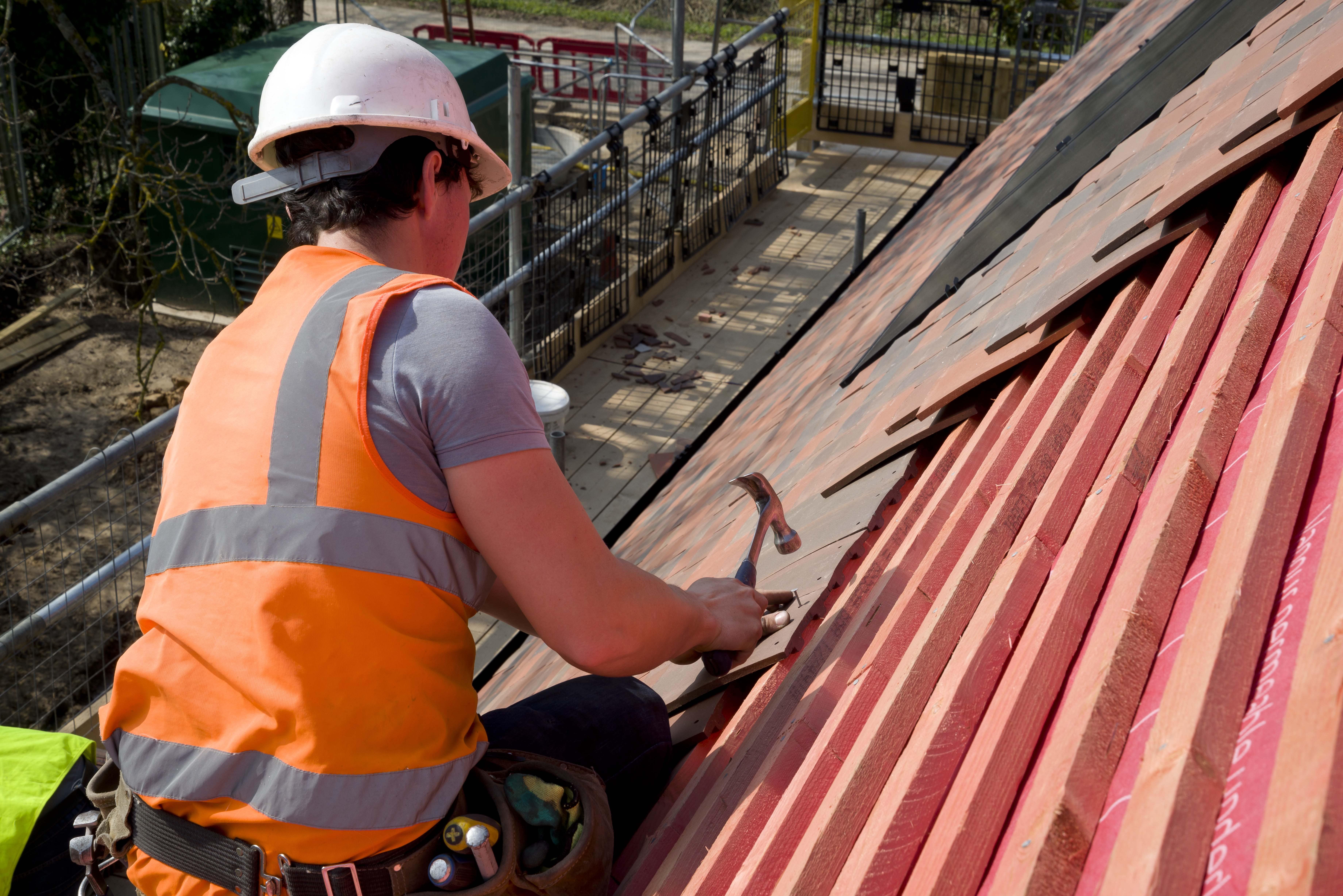Improving roofing safety and security

With new regulations putting building safety in the spotlight, Phil Wallis, Technical Manager at Marley, discusses the measures contractors can take to reduce risk and ensure the long-term performance of pitched roofs – including specification of roofing battens, roof tile fixings and fire-safety measures.
Roofing products and the Building Safety Act
The publication of the Building Safety Bill, on 5 July 2021, brought the biggest changes to building safety regulations in a generation. The bill was granted royal assent and became the Building Safety Act on 28 April 2022. It ensures safety is considered at every stage of a building’s development and gives residents more power to hold builders and developers accountable.
While the act focuses on high-rise buildings, it also ensures high standards of safety in all homes. It extends the amount of time that residents can seek compensation for substandard construction work and gives responsibility to the Office for Product and Safety Standards (OPSS) to ensure homes are built from safe materials.
Improving the safety of pitched roofs
Safety has always been a priority for the pitched roofing sector, and in recent years, roofing standards have been made far more stringent. Updates to BS 5534:2014+A2:2018, the code of practice for slating and tiling for pitched roofs and vertical cladding, and BS 8612:2018, the specification for dry fixed ridge, hip, and verge systems for slating and tiling, have had a positive impact on the overall safety and security of pitched roofs.
However, Building Regulations and British Standards are routinely updated , so it is important for roofing contractors to review their practices to ensure they comply with the latest guidance.
Here, we look at some of the key areas to consider when it comes to ensuring the long-term safety and security of pitched roofs.
Always install roofs to the BS 5534:2014 +A2:2018 standard
This standard was revised to help make roofs safe and secure against extreme weather. This also applies if you are working on an extension and if you are replacing more than 25% of a roof area.
An important part of this is checking that roofing battens are BS 5534 compliant. Roof battens are an important structural and load-bearing element. In addition, BS 5534 graded battens can be used as a secure foothold during installation. Don’t assume that because a product is sold as a roofing batten that it meets BS 5534 requirements. Buy from a trusted brand and check each batten is indelibly marked with the supplier, origin, size, and BS 5534 stamp. If you have any doubt at all, check with the manufacturer.
Get a fixing specification for every roofing project
This will ensure the roof meets BS 5534 requirements and that it has the right fixings for the level of exposure. You can quickly obtain free fixings specifications via the Marley website, or by calling our technical team on 01283 722588.
Check roof fire barriers used in semi-detached, terraced housing and flats
When a roof is compartmentalised for terraced and semi-detached housing, fire stopping is required between the top of the party wall and the roof covering. Modern and refurbished homes should have correctly installed fire barriers to prevent the risk of fire spreading from one home to the next.
Marley’s Roof Defence is an easy-to-install fire barrier. It features two strips of intumescent material bonded at 90 degrees, with an inverted T design, that can simply be installed under tiles and between roof battens to close all gaps in the event of fire.
Consider buying a full roof system from a trusted manufacturer
This will ensure compatibility, high quality, safety and compliance with British Standards. Our roof system includes choice of roof covering, battens, underlay, fixings and accessories, as well as the option to add a fire barrier and integrated solar PV, with a 15-year warranty for extra peace of mind.
Building safer roofs with Marley
As specialists in roofing products, Marley offers everything needed to create high-performance, reliable and safe roofs. To find out more, download our roofing products guide. Or get in touch with a member of our team to discuss your roofing project in more detail.
Disclaimer - The information shared in this blog is correct at the time of publication. Guidance, standards, and best practices may change over time, so if you’d like further clarification or the latest updates, please get in touch with the Marley Technical Advisory Team, who will be happy to help.